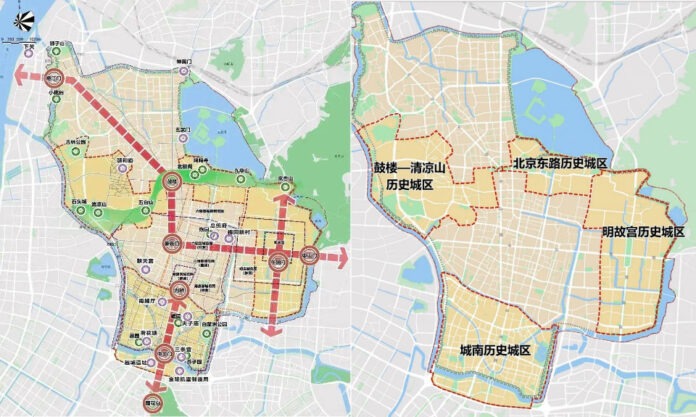Every so often in Nanjing, one ventures down a road not visited in some time, generating the reaction, “Wow, look, they widened the street”. The scene is more orderly with more space and less muddle. But a new plan will limit such activity and protect our City’s heritage.
It was just recently that the Nanjing Municipal Planning and Resources Bureau announced the new version of the “Nanjing Historical and Cultural City Protection Plan”, seeking to prioritise future protection initiatives and impose limits on what can and cannot be built, and where.
The new version of the plan, now in its fifth incarnation, proposes to protect and maintain the road pattern formed since the Six Dynasties and the Southern Tang Dynasty, as well as that which formed the City’s skeleton during the Republican era; Zhongshan Bei Lu, Zhongshan Lu and Zhongshan Dong Lu.
Furthermore, the plan seeks to prioritise the development of public transportation and the implementation of slow traffic in the four main historical urban areas that embody the traditional style of Nanjing dating from the Ming and Qing Dynasties.
Specifically, they be the Historical Areas of the Southern City, Minggugong, Gulou-Qingliang Shan and Beijing Dong Lu.
Among them, the Southern City Historical Area embodies the traditional cultural landscape that is “city, river, mountain, pagoda, temple and folk residences”, representative of the old city of Nanjing during the Ming and Qing Dynasties.
The Minggugong Historical Area protects the Ming Imperial City, with its palaces, moats and other relics that present history showing the layout of the imperial city of the Ming Dynasty.
Displaying Nanjing’s modern historical and cultural resources is the Gulou-Qingliangshan Historical Area, with the natural environment of Stone City that has also a beautiful geographical shape and rich cultural atmosphere.
Lastly, the Beijing Dong Lu Historial Area is surrounded by mountains and water, and is where city and forest integrate, forming a cultural area focusing on cultural exhibitions, tourism and leisure.
Protecting and further facilitating access to Xuanwu Lake is also prioritised by the Cultural City Protection Plan. It proposes further opening up of the Lake’s shoreline, while also putting in place strict controls for height of buildings around the Lake.
We can also expect the building of museums that reflect Nanjing’s science and technology, the art and culture of various dynasties, and associated supporting infrastructure and signage, as the Yangtze Evening News has reported.
The Plan remains open for comment by the public until 28 October, 2023. Contact information is available on the website of Nanjing Municipal Planning Resources Bureau.









